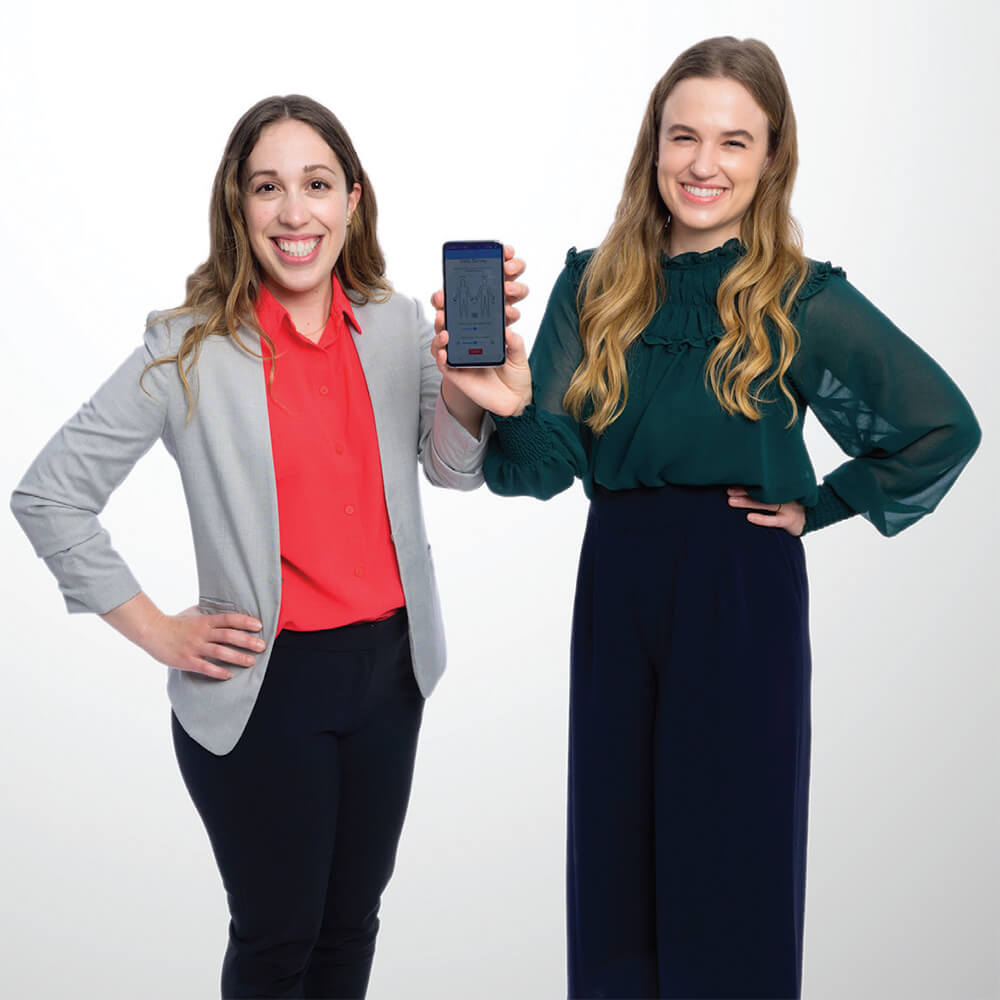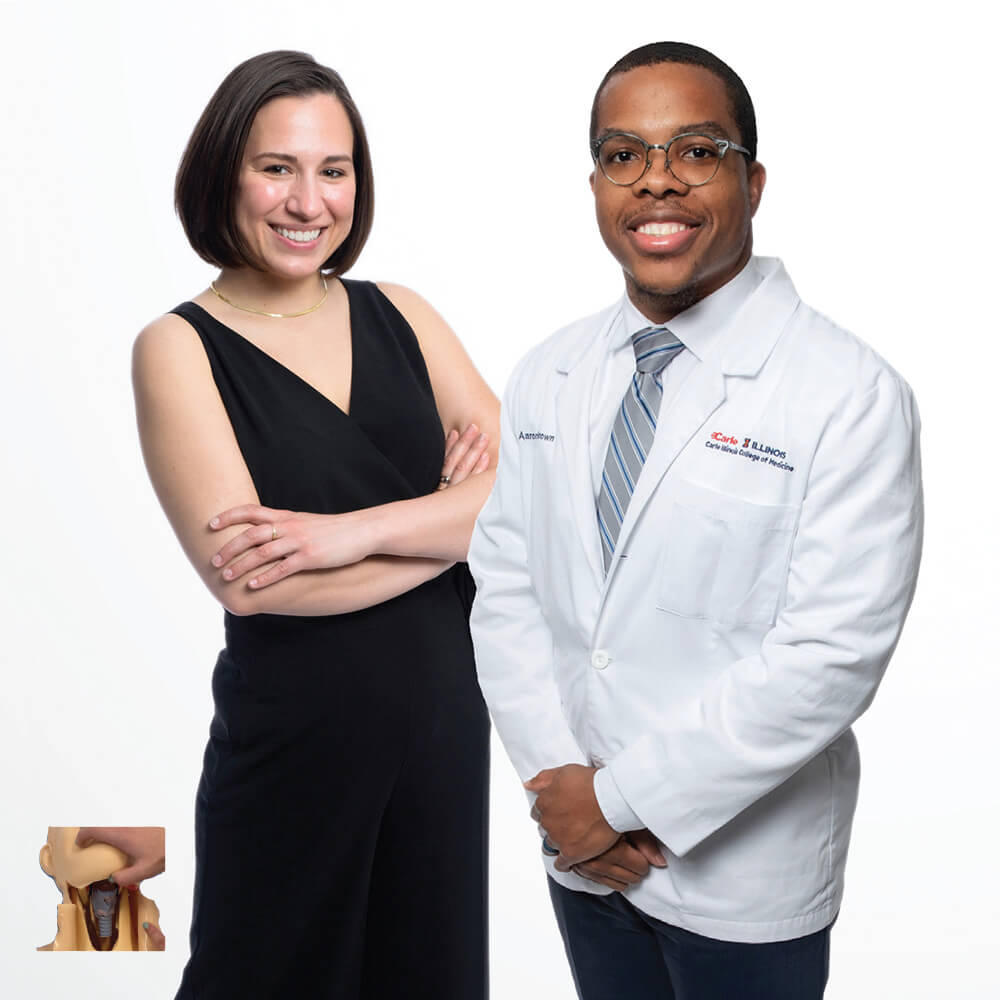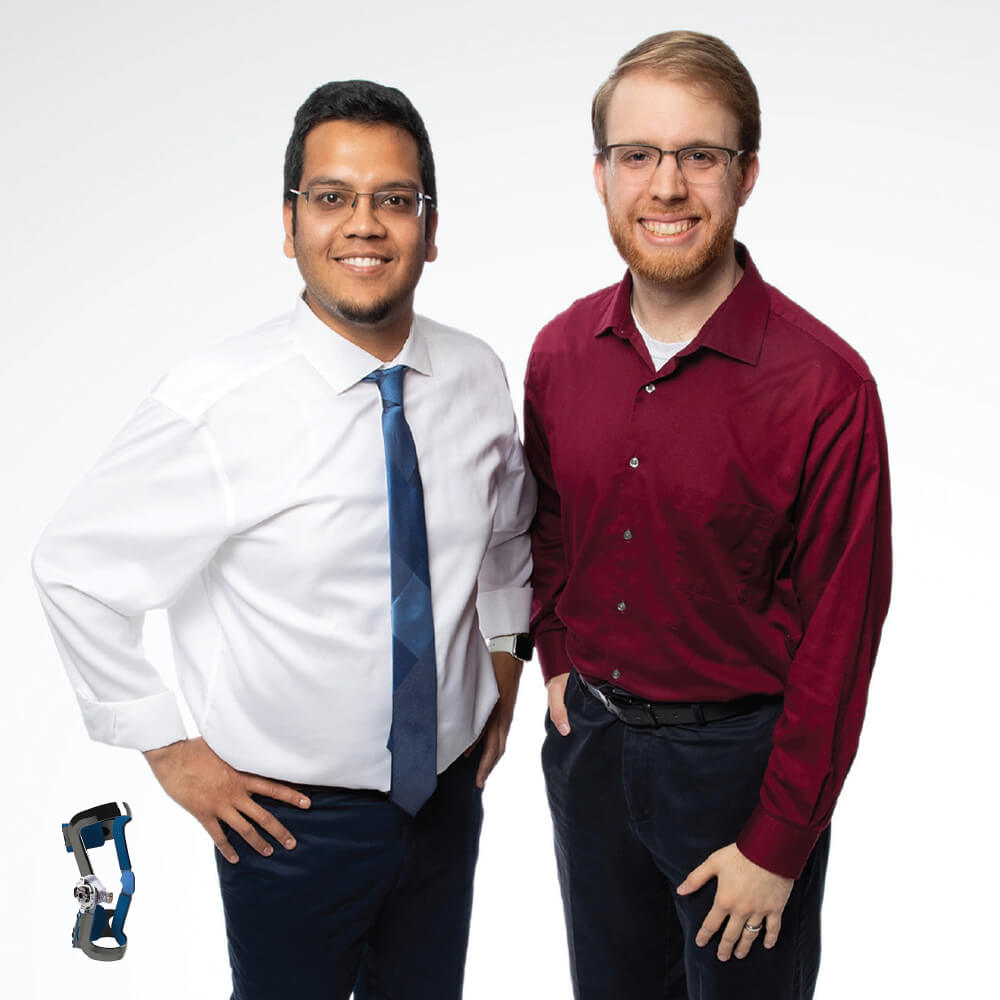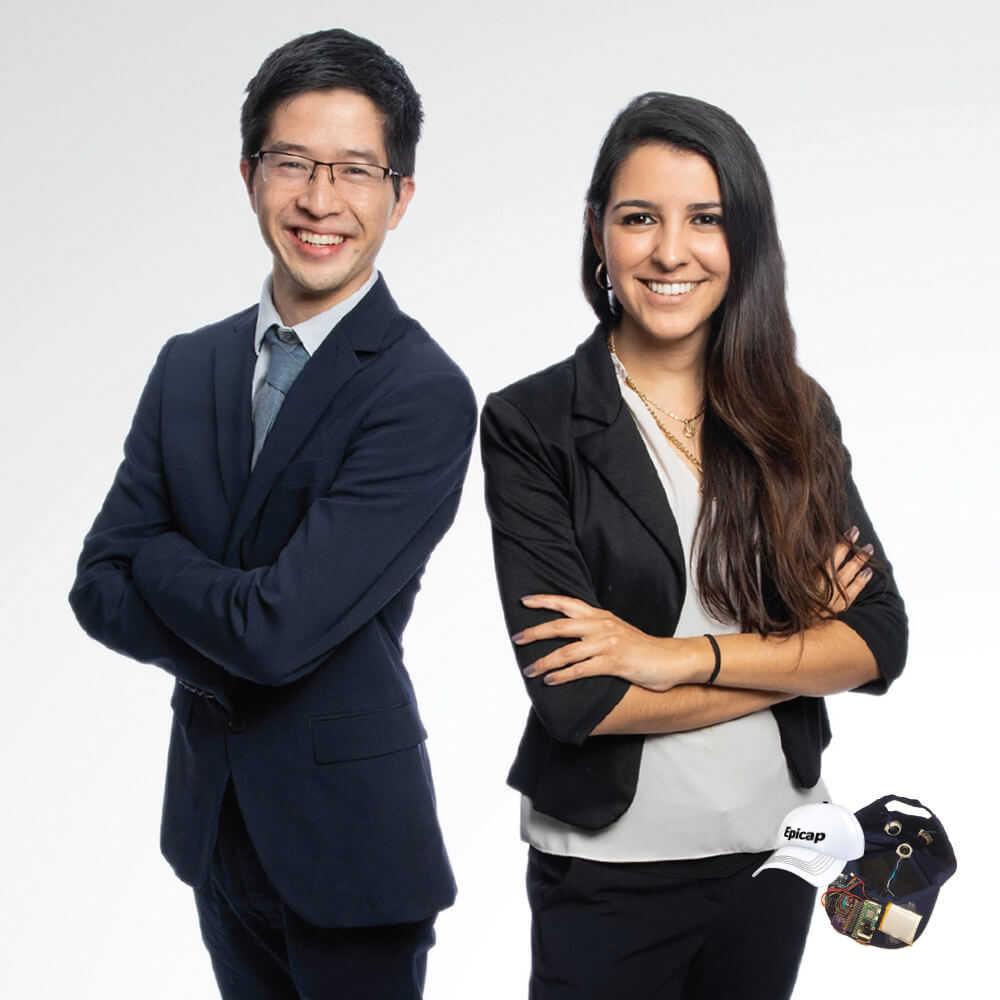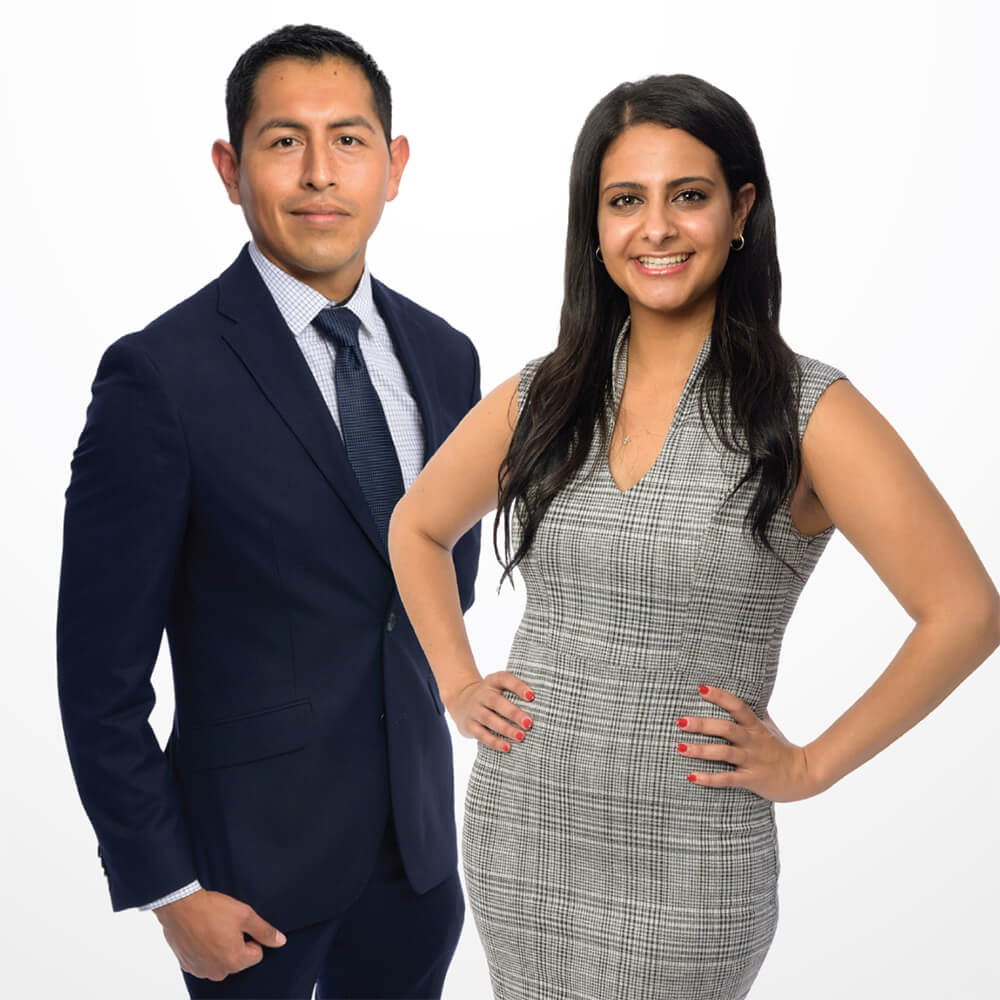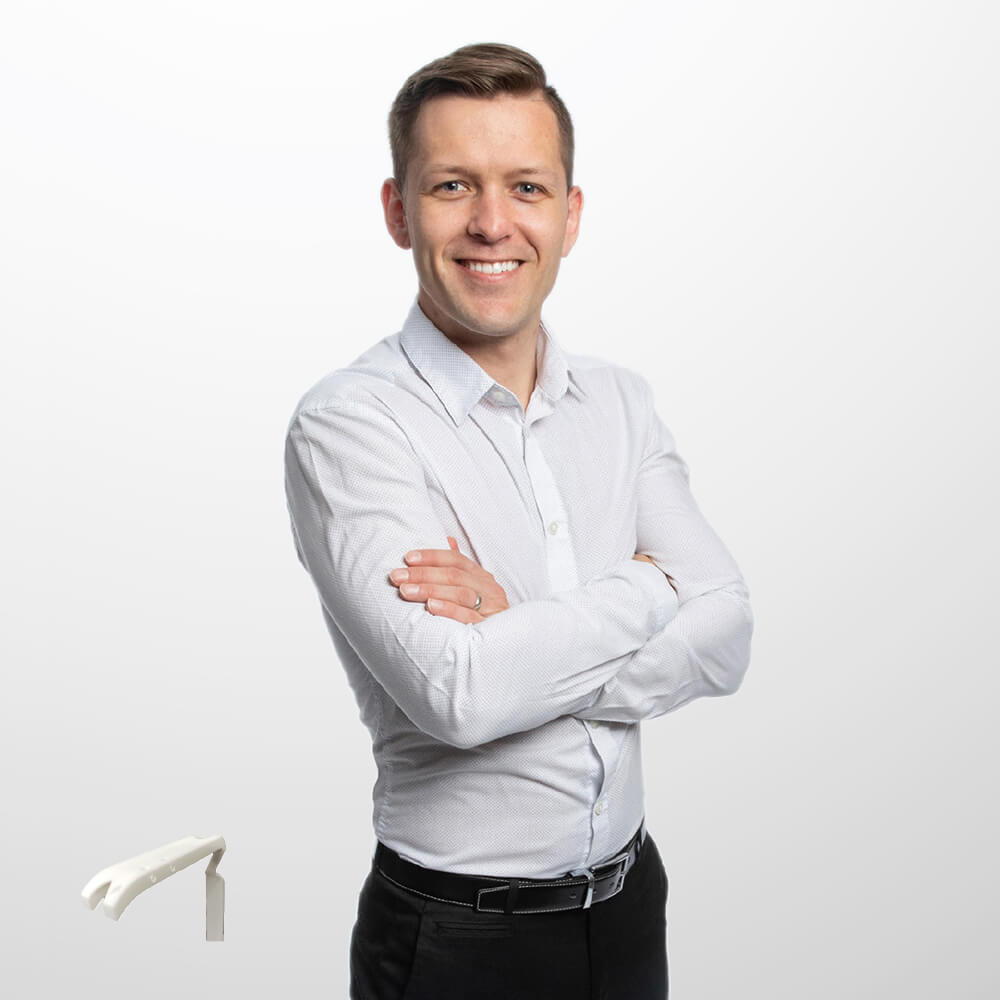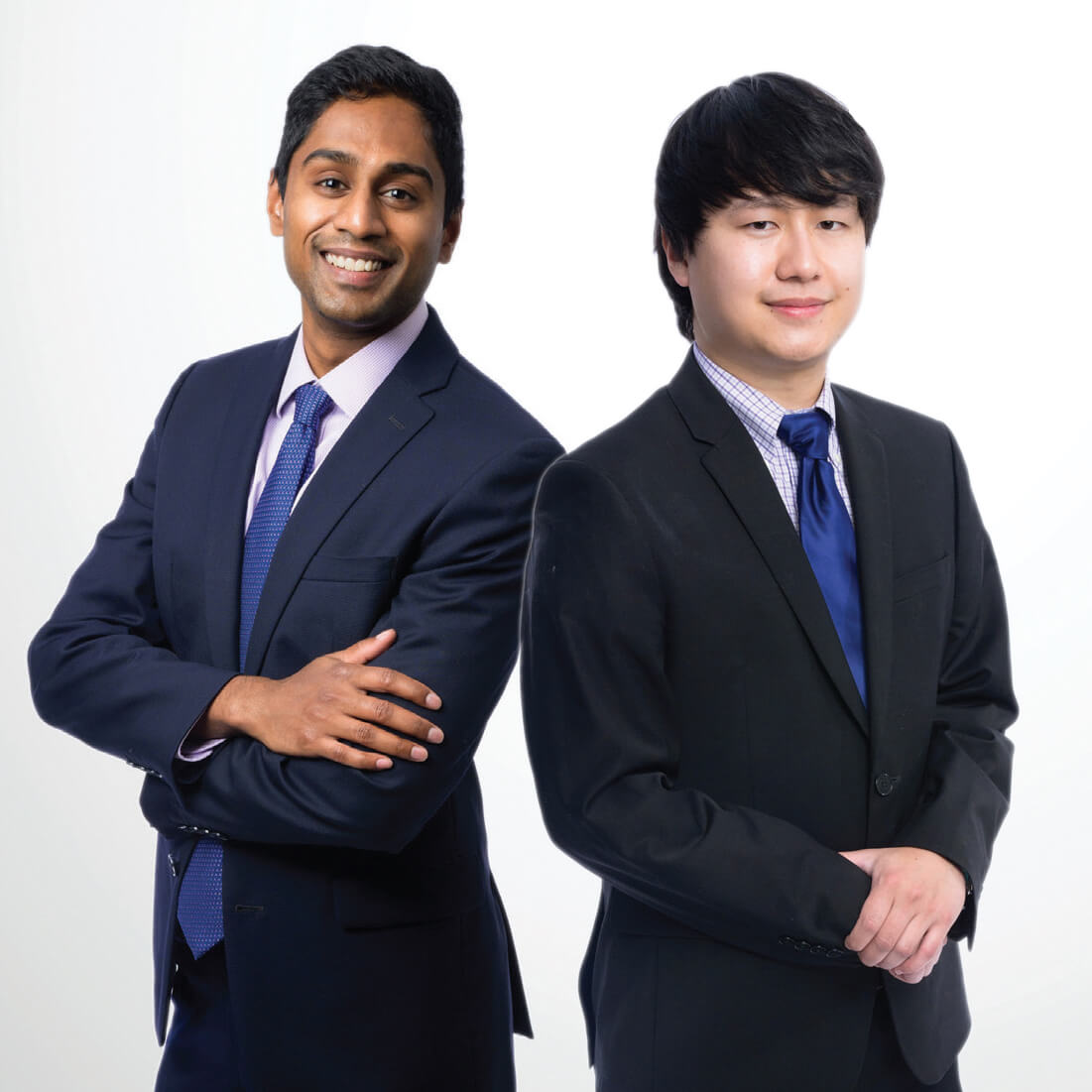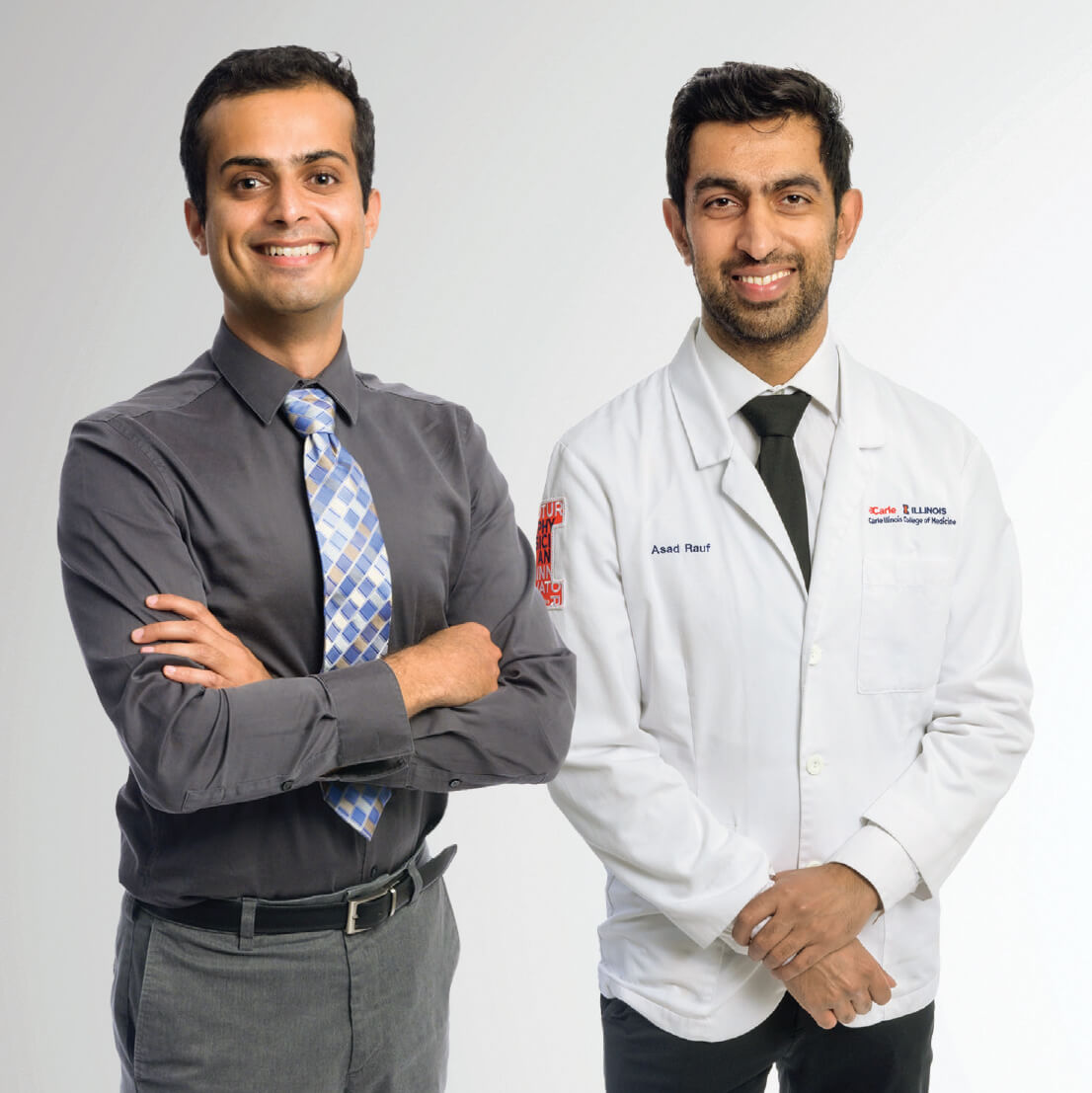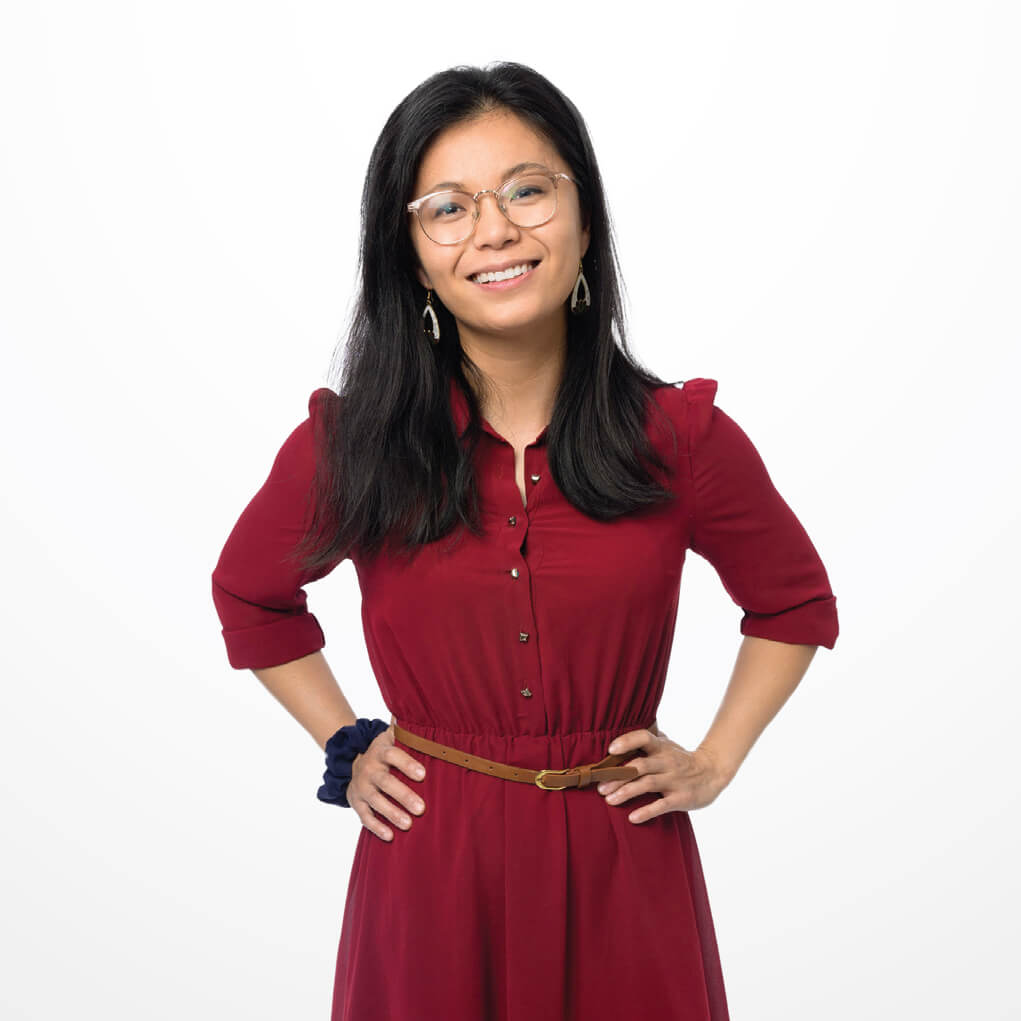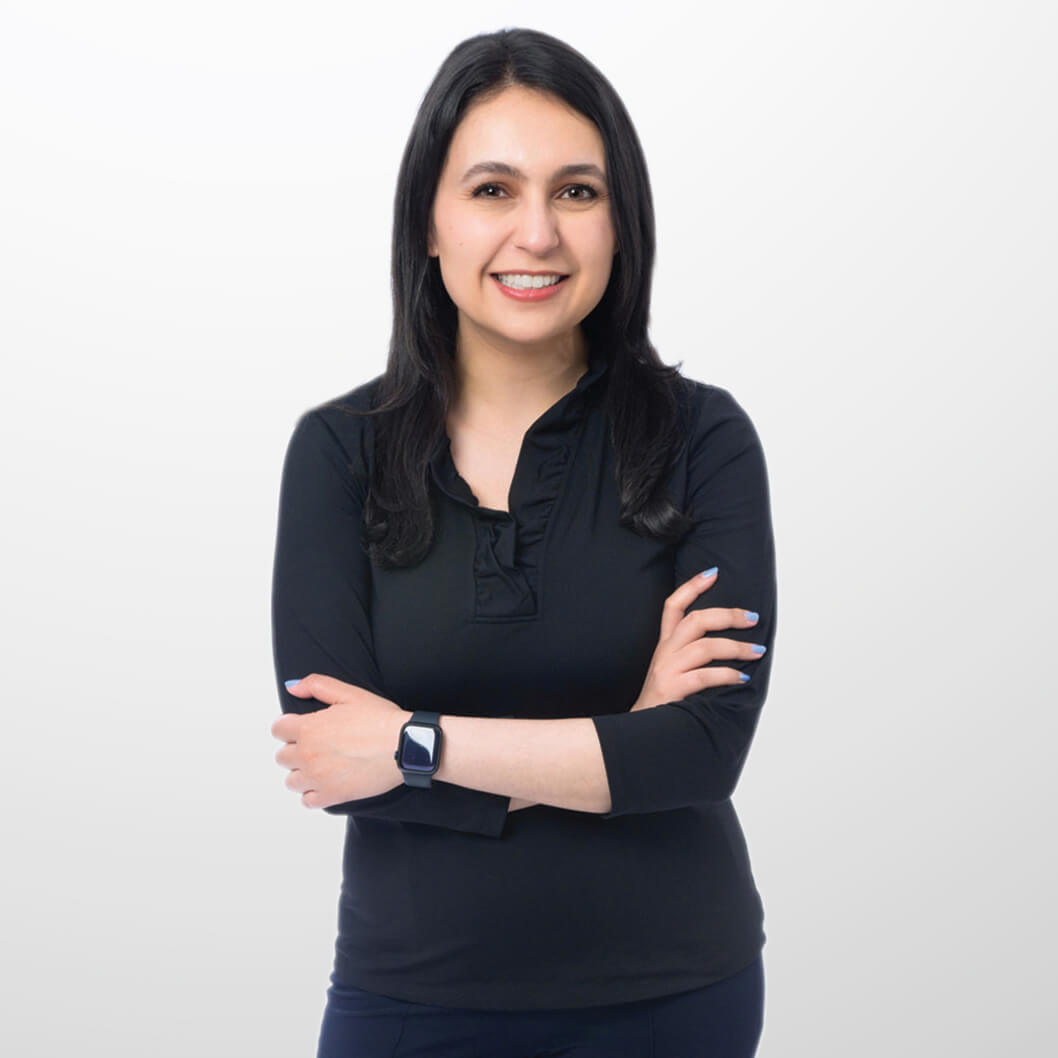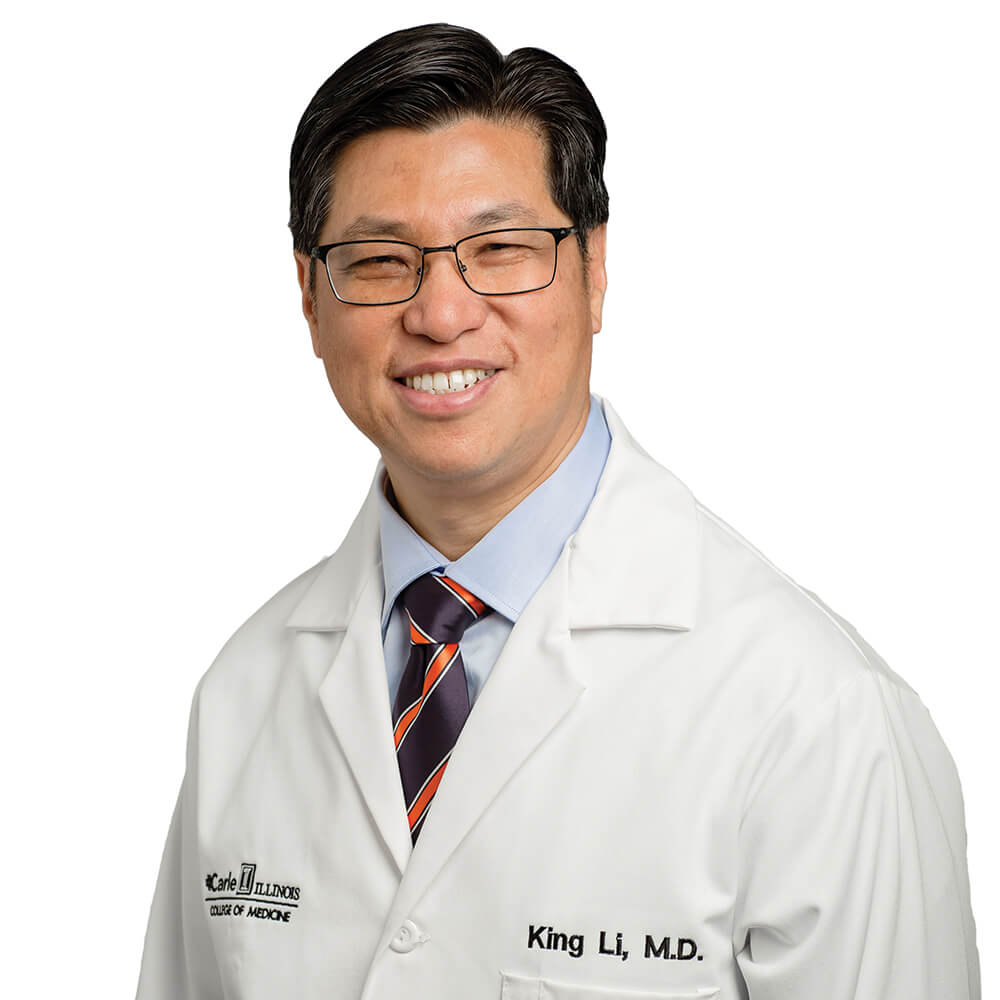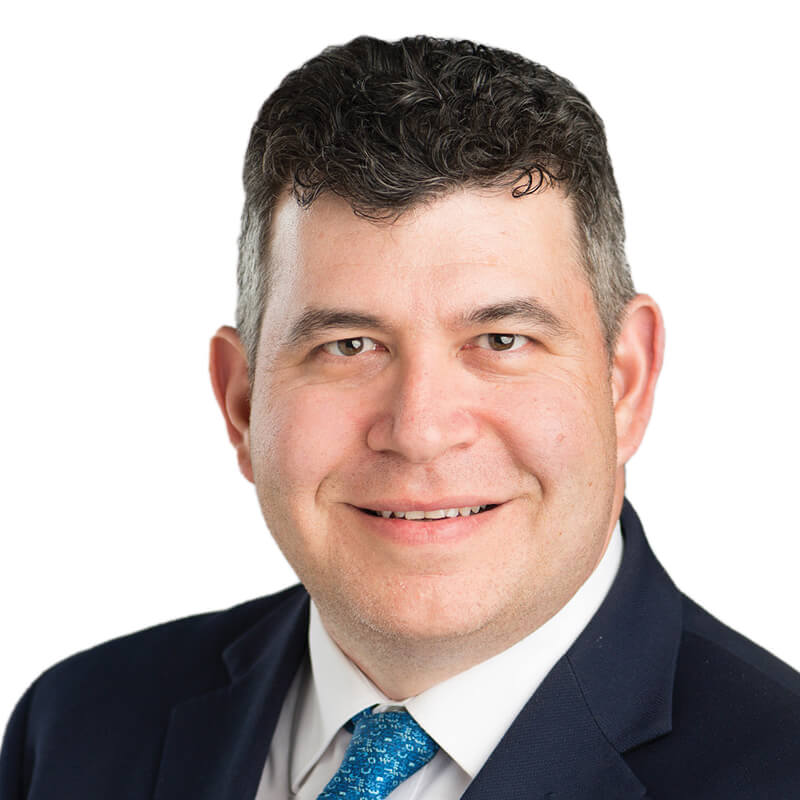FIRST CLASS
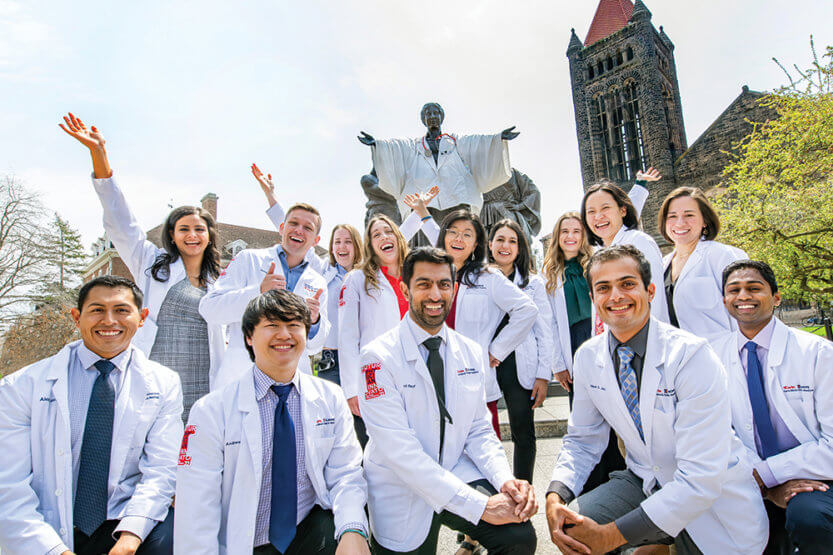 The Carle Illinois College of Medicine sends off it’s first class from their school as the world's first engineering-based college of medicine. (Image by Fred Zwicky)
The Carle Illinois College of Medicine sends off it’s first class from their school as the world's first engineering-based college of medicine. (Image by Fred Zwicky) To understand what has happened at the Carle Illinois College of Medicine (CIMED), it’s helpful to begin on a scale that goes from titanic to tiny. Within the mighty University of Illinois Urbana-Champaign, more than 56,000 students strong, a medical school like no other opened four years ago. That school is now sending its first cohort into the world—a graduating class of 23 students, their white lab coats branded with the orange and blue of the Block I, designating them as “physician innovators.”
O brave new world that will have such doctors in it.
They arrived on campus in the summer of 2018, trailing degrees in disciplines ranging from neuroscience and biomechanics to electrical engineering, computer science and math—degrees from Stanford, MIT, Princeton and other top-rated institutions of higher education, including Illinois itself. Chosen from a field of more than 1,000 applicants and rewarded for their risk-taking with four-year full scholarships, they converged upon a historic time and place, at a brand-new school founded to infuse the eternally evolving challenges of medicine with the limitless potential of engineering and information technology.
Jointly run by Illinois and Carle Foundation Hospital, CIMED is one of just a few medical schools in the nation with an engineering focus, and it’s the first institution founded for that purpose. Its inaugural class was plunged into a new paradigm for medical education. A three-phase curriculum places students in clinical settings almost immediately, immerses them in basic science and case studies, and sends them to clerkships in a range of specialties at practices around central Illinois and throughout the country.
They also are afforded time to reflect and create. Beyond engineering and information technology, the curriculum emphasizes ethics and humanism, focusing on how to be the best possible doctor in a world of confounding, replicating, unending complexity.
Interdisciplinary resources such as the University-wide Health Maker network of labs and workshops help the students to create capstone projects as the culmination of their medical and engineering education. Forming teams with each other and students from other colleges, they brainstorm ideas that unfold into prototypes, marketing plans, and even potential licensing and start-ups. Descriptions of the first capstones and other student research projects can be found in the following pages.
Now the members of the CIMED Class of 2022 are bound for residencies at some of the nation’s best clinics and hospitals. Every one in the main National Resident Matching Program matched with their preferred specialty—a 100 percent success rate.
Their dream and the dream for them is that they be catalysts, inciting change in a world where medicine is far more than what generations past could have imagined and yet where continued adaptation is essential for humanity’s future. May they pass like an elixir into the bloodstream of medicine and life on Earth. All the best to the 23 Illinois physician innovators of 2022—a very small graduating class poised for a huge beginning.
CAPSTONE PROJECT
A mobile pain management app that gives at-a-glance graphical views of how a patient’s chronic pain changes over time, allowing physicians to develop more effective treatment plans and help patients better manage their pain.
Samantha Houser
Residency Physical Medicine & Rehab, Vanderbilt University Medical Center, Nashville, Tenn.
Also worked on a meta-data analysis of spinal cord ischemia, with classmate Christina Moawad.
Andrea Hall
Specialty Psychiatry
Also established a human rights clinic run by CIMED students to provide medical and psychological evaluations to asylum seekers in central Illinois and to raise awareness of human rights issues, with classmate Lidija Barbaric.
CAPSTONE PROJECT
Airway, an insert modeled on the larynx and trachea to be used in manikins for intubation practice, making simulations more varied and true to life.
Lidija Barbaric
Residency Anesthesiology, Case Western Reserve University, Cleveland, Ohio
Also established a human rights clinic with classmate Andrea Hall. (See above.)
“Individuals seeking asylum and other forms of documentation are often not seen or heard, but they are here in our community. There is a legitimate and true need for this type of work.” —Lidija Barbaric
Aaron Brown
Residency Anesthesiology, Stanford Health Care, Stanford, Calif.
CAPSTONE PROJECT
Bionic Knee, an affordable knee brace that couples a power generator with biofeedback sensors to help cerebral palsy patients and people with knee injuries overcome stiffness and improve their walking.
Md-Shahnoor Amin
Residency Internal Medicine, Henry Ford Hospital, Detroit
Also worked on a system to link a smart-watch app to the computer in a self-driving vehicle. Were the driver to have a heart attack, the car could safely re-route to the nearest hospital—where the driver’s data would already be in the hands of a health care team.
“The aim is to improve patient mobility and reduce cost to patients and U.S. health care; cerebral palsy alone accounts for $1 million lifetime cost for each patient.” —MD-Shahnoor Amin
Dylan Mann
Residency Physical Medicine & Rehab, University of Minnesota Medical School, Minneapolis
“I have a cousin with cerebral palsy, and he has been my source of inspiration for this entire project. One time when I went to visit him, he ran towards me, full of excitement, and I said to myself, “His knee doesn’t work. What can we do about that?” I came here because I felt CICOM was going give me the opportunities that I needed to execute this idea that had been brewing in my head.” —Dylan Mann
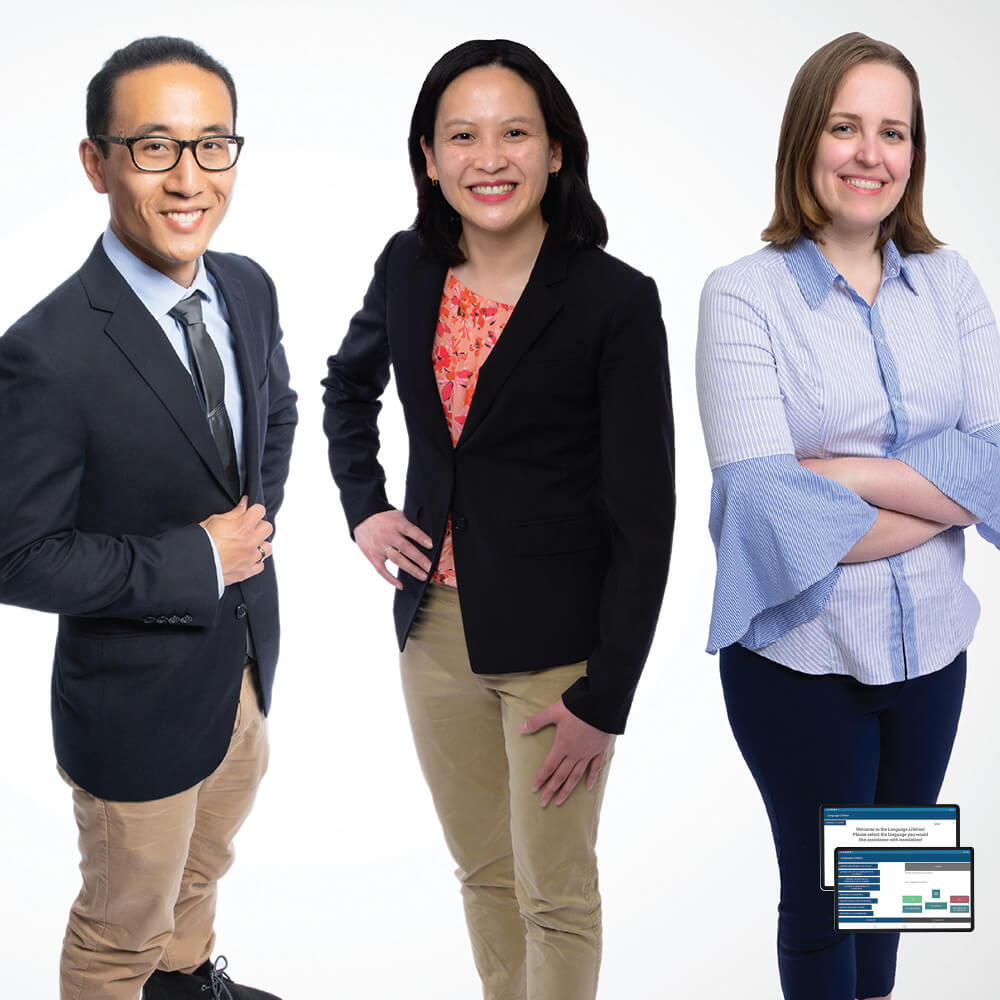
Matthew Lee, Valerie Chen and Elizabeth Woodburn (Image by Fred Zwicky; insert image courtesy of CIMED)
CAPSTONE PROJECT
SureThread, a device designed to insert an IUD after a Caesarean section and ensure that it can also be removed with minimal complications. It is the first device of its kind specifically designed for intra-operative use.
Matthew Lee
Residency Urology, Mayo Clinic, Rochester, Minn.
Also worked on an award-winning case report on ovarian teratomas, germ cell tumors that most often occur in postmenopausal patients.
“My biggest takeaway from this project has been how to handle the team-based approach to medical innovation. We’ve been encouraged at every step to think of ideas, identify problems, come up with solutions. But working with students from engineering and from business, managing different teams and some really talented individuals, and trying to get everyone to work towards a common goal was really enlightening.” —Matthew Lee
Valerie Chen
Residency Obstetrics-Gynecology, Mayo Clinic, Rochester, Minn.
Also worked on a data analysis of frozen embryos, with CIMED student Christine Chien.
“Because official material test sites suffered backlogs, it was necessary to design our own setup to approximate the filtration characteristics of our test materials.” —Valerie Chen
TEAM PROJECT
A study of the best materials for constructing homemade and alternative masks and personal protective equipment. Conducted in 2020 at the onset of the pandemic, Valerie Chen and Elizabeth Woodburn’s study is cited on the federal Centers for Disease Control and Prevention website.
CAPSTONE PROJECT
Language Lifeline, a smartphone app designed to break communication barriers between patients who don’t speak English fluently and the medical staff caring for them through a simple interface that allows the patient and the provider to choose their own language and then select the question, phrase or response that needs to be translated.
Elizabeth Woodburn, ENG ’18
Residency Pediatrics, Duke University Medical Center, Durham, N.C.
“We answered questions from a home mask-maker who was trying to understand our methodology, which was in line with our overarching project goal: to take very specific federal testing requirements and bring them to an audience of non-materials engineers.” —Elizabeth Woodburn
Kitan Akinosho (not pictured)
Residency Emergency Medicine
CAPSTONE PROJECT
Epicap, a baseball cap that uses an electroencephalogram (EEG) and a small video camera in the visor. The technology is designed to allow doctors to monitor patients who are at risk for seizures, leading to faster diagnosis and monitoring.
Kenneth Leung
Residency Internal Medicine, University of California, Irvine Medical Center, Orange, Calif.
Also worked on Crisis VR, a virtual-reality training program designed to enhance police officers’ psychosocial skills and cultural sensitivity when dealing with people who are experiencing behavioral health issues, with CIMED student Alex Teague; and a design that uses wire-free bulbs for electrocardiograms as an alternative to wired electrocardiograms.
“Our goal in creating Epicap is to enable easier access for patients to be diagnosed in the comfort of their own homes and continue their daily activities.” —Kenneth Leung
Jennifer Cortes
Residency Psychiatry, Emory University, Atlanta
“Through this project I was exposed to research in EEGs for diagnosing psychiatric conditions. That’s an area where I hope to be able to contribute, to see if we can use EEGs for diagnosing and monitoring patients with psychiatric conditions, including depression.” —Jennifer Cortes
CAPSTONE PROJECT
A back-of-the-ambulance safety harness that is easy to install and wear, and protects medics from injury in the event of sudden acceleration, deceleration or collision.
Alex Lucas, ENG ’12
Residency Emergency Medicine, ACMC/Advocate Health Care, Oak Lawn, Ill.
Christina Moawad
Residency Orthopedic Surgery, NYU Long Island, Mineola, N.Y.
Also worked on a meta-data analysis of spinal cord ischemia, with classmate Samantha Houser.
CAPSTONE PROJECT
Air CleanOR, an oral cavity smoke evacuator that is designed like a simple tongue depressor and makes mouth and throat surgeries safer by clearing the air of potentially hazardous surgical smoke. With Dora Linn, CIMED Class of ’23
Zachary Meade
Residency General Surgery, Naval Medical Center, San Diego
“I enlisted with the Army and served for eight years as a bomb-squad specialist. I met many service members who had made tremendous sacrifices, including one who had to receive a substantial amputation. I will continue serving my country throughout my residency, and I plan to devote my career to helping those with traumatic injuries.” —Zachary Meade
Ethan Chen (not pictured)
Residency Medicine-Preliminary/Diagnostic Radiology, Harbor-UCLA Medical Center, Los Angeles/Loma Linda University, Torrance, Calif.
Also worked on how radiomics, the extraction and analysis of information from medical imaging, can add value to clinical decision-making in oncology.
CAPSTONE PROJECT
An innovative fluoroscopic imaging system that guides physicians treating liver cancer using a catheter-and-wire system that deploys radioactive microbeads.
Phanindra Gaddipati
Residency Medicine-Preliminary/Diagnostic Radiology, Carle Foundation Hospital, Urbana/University of Washington, Seattle
“My goal as a physician innovator is to contribute to the cutting edge. CIMED is the one medical school I found that embraces engineering and has allowed me to continue that aspect of my career.” —Phanindra Gaddipati
Andrew Chang
Residency Internal Medicine, Carle Foundation Hospital, Urbana
Both also worked on ProteCKD, a home kidney function test kit and educational materials for early detection of chronic kidney disease among medically underserved populations.
CAPSTONE PROJECT
An improved catheter that incorporates simple valves and ports into the basic design to prevent urinary tract infections resulting from catheterization.
Neel Jani
Residency Neurology, University of Wisconsin Hospital and Clinics, Madison, Wis.
Asad Rauf
Residency Internal Medicine, Cleveland Clinic, Cleveland, Ohio
“I’m an engineer and techie at heart, and I love to play around with and explore new technology. I also find myself brainstorming different tech-focused solutions to various problems. I am not really aware of another school where the entire focus and approach reflects the same kind of thinking.” —Asad Rauf
CAPSTONE PROJECT
Smart Toilet, a toilet that automatically collects and analyzes urine samples, which should be especially efficacious in treating patients with kidney disease who require regular monitoring.
Yusi Gong
Residency Internal Medicine, Beth Israel Deaconess Medical Center (teaching hospital of Harvard Medical School), Boston
Jian Zhuang (not pictured)
Residency Internal Medicine, Zucker School of Medicine/North Shore University and Long Island Jewish Medical Center, Great Neck, N.Y.
CAPSTONE PROJECT
Breasy, an easy-to-use design for a spirometer, a device that helps pneumonia patients recovering from surgery to breathe deeply and prevent the build-up of fluid in their lungs. With CIMED student Linus Lee.
Roxana Azimi
Residency Plastic Surgery (Integrated), MedStar Georgetown University Hospital, Washington, D.C.
TOP DOC
CIMED inaugural dean King Li on building a school from scratch, teaching medicine in a totally different way and where the revolution started
Founding CIMED was an enormous undertaking. What are you most proud of?
Building a medical school from scratch is, clearly, a very challenging endeavor. When I started, it was me and two other staff members. Now, we have more than 600 faculty, and the school is now ready for full accreditation. It’s gratifying to see how we have been able to recruit a very talented and dedicated pool of faculty and staff as well as exceptional students who will make us proud in the future. This is really the capstone of my career.
What was the biggest challenge?
The way we built the curriculum. It is unique. No one has ever done this before. It required collaboration across many disciplines. We have faculty from 11 colleges. We had no models to follow because our curriculum is an unprecedented integration of engineering, data science and medical humanities with clinical sciences and basic sciences. Building it was a monumental task.
Why create a new paradigm for medical education?
The whole point is to teach medicine in a totally different way. Our goal is to train physician innovators who can leverage everything they learn to improve healthcare quality, reduce its cost, and make it more accessible and equitable. Our students are ready to innovate from day one. Many of them have backgrounds that will allow them to do that. And their early clinical experience will help them to develop into physician innovators more quickly.
How central is technology to the curriculum?
It can be easy to get lost in technology, especially in a school such as U of I that is engineering-based. That’s why we also emphasize medical humanities classes and how humanistic aspects of medicine can impact practice—sometimes far more than the technology that we employ.
What’s the takeaway for the future of U of I’s new medical school?
Alumni should be very proud of the University because it had the ambition and resources to make this happen. It was very courageous. Fifty years from now, people will say Carle Illinois College of Medicine is where the revolution started. That’s pretty cool.—MT
Editor’s note: A radiologist, bioengineer and computer scientist who holds numerous patents, King Li recently retired as dean of CIMED. He came to Illinois in 2016 from Wake Forest University, where he served as senior associate dean for clinical and translational research.
NEW LEADER
Meet CIMED’s Incoming Dean
CIMED Dean Mark Cohen comes to Illinois from the University of Michigan where he was a professor of surgery and pharmacology, and led Paths of Excellence in Innovation and Entrepreneurship, a program for medical students. His expertise is in endocrine surgery, and his research has included cancer drug development and drug delivery systems. “Medical technology is changing so rapidly today that physicians need to be trained in how to adapt and utilize new technologies in their practice as well as how to better solve problems in medicine through iterative design thinking,” he said in an earlier interview at U-M Medical School. “In the current medical environment, having a great idea on how to solve a problem in medicine is not enough. Physicians also need the skills to communicate and advance their ideas and solutions to elicit change and adoption in the health care system.”—MT

